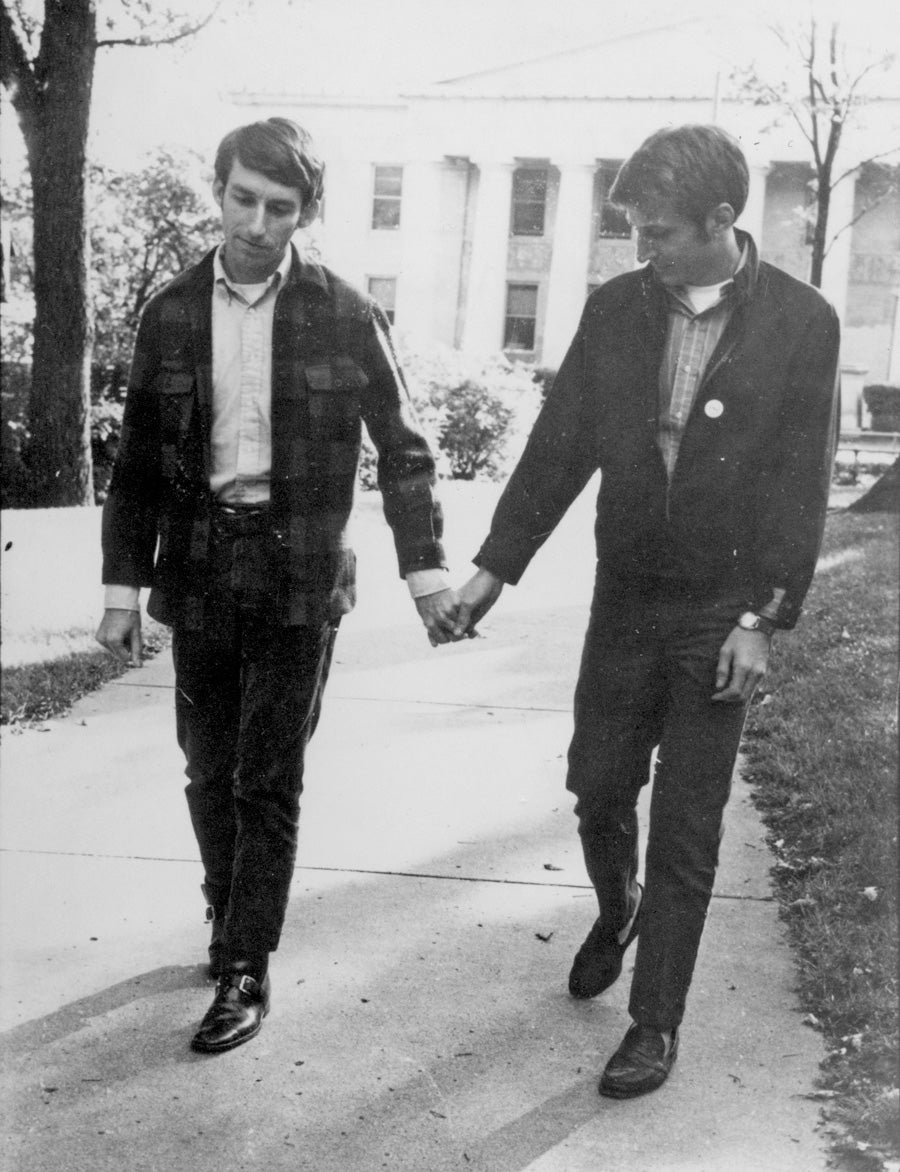How America legalized same-sex marriage.

A brief history of the fight for marital rights.
Early this year, we witnessed a landmark moment for LGBTQ+ rights in America. The Supreme Court voted to protect LGBTQ+ people from employment discrimination under Title VII, otherwise known as The Civil Rights Act of 1964. The ruling prohibits discrimination on the basis of sexual orientation or transgender status. The ruling was the biggest civil rights win for LGBTQ+ Americans since the legalization of same-sex marriage–which celebrates its fifth anniversary this past June.
In celebration of the heroes that fought for queer rights and visibility, here’s are the landmark rulings that had a role in marriage equality
The early trailblazers
In 1970, same-sex couple—Jack Baker and Michael McConnell of Minnesota—applied for a marriage license under gender-neutral names. They were denied and the case traveled to the Supreme Court where it was quickly dismissed. The pair got married anyway, in white bell-bottom pantsuits, no less. In 2019, after nearly 50 years of marriage, their marriage was recognized by the state.
State to State Rulings
Hawaii became the first state to take a step towards making homosexual marriage legal in the early 90s. In a historic first, the court saw the case of three same-sex couples who sited discrimination and referenced the 1967 ruling in favor of Mildred and Richard Loving’s interracial marriage. At the time, there was no national legislation regarding gay marriage. Ultimately, the case was thrown out but had national implications in the conversations of what legalization would look like— as states would have to decide how to recognize marriages performed in other parts of the country.
Defense of Marriage Act (DOMA)
President Bill Clinton signed a law during his first term in 1996 called the Defense of Marriage Act. The statute ruled that no state is required to recognize the validity of same-sex marriage even if it’s recognized by another state, meaning that even if you could get married in one state, it didn’t count in another. DOMA also blocked same-sex couples from getting federal benefits and defined marriage as being strictly between a man and a woman. Gradually, between 2004 and 2015, this conception of marriage would be challenged on a state level.
2004
In early 2004, San Fran mayor Gavin Newsom ordered the city council clerk to issue same-sex marriage licenses. 4,000 were sent out. Rosie O’Donnell, Fun Home creator Alison Bechdel and the LGBTQ+ activist Phyllis Lyon were among those granted licenses. The issuing of the licenses was found to contravene state law, and they were voided.
The same year, Massachusetts historically became the first state to legalize gay marriage. In Cambridge, on May 17, 2004 at 12:01AM—the day the law went into effect—city officials begun to issued licenses. Outside the decorated city hall, an uproarious party of glitter hats and white cake occurred outside.
United States v. Windsor
Edith Windsor was the LGBTQ+ rights campaigner and plaintiff who challenged DOMA after she was made to pay nearly half a million dollars in federal taxes on her late wife, Thea Spyer’s estate. Had her marriage been legal and typical marital rights in place, no taxes would have been paid. In June 2013, the Supreme Court of the United States, having heard Windsor’s case, struck down DOMA for violating the Fifth Amendment. The unconstitutional ruling would pave the way for the legalization of same-sex marriage across America two years later.
Obergefell v. Hodges
In 2015, Obergefell v Hodges was brought to the Supreme Court, named after a man from Ohio who sued the state in order to be listed on his husband’s death certificate. Five of nine Supreme Court judges determined that marriage equality was included under the Fourteenth Amendment—giving national recognition to marriage for all. The White House was lit up with a rainbow flag to celebrate. “This ruling is a victory for America,” President Obama said at the time. “This decision affirms what millions of Americans already believe in their hearts: when all Americans are treated as equal, we are all more free.”





